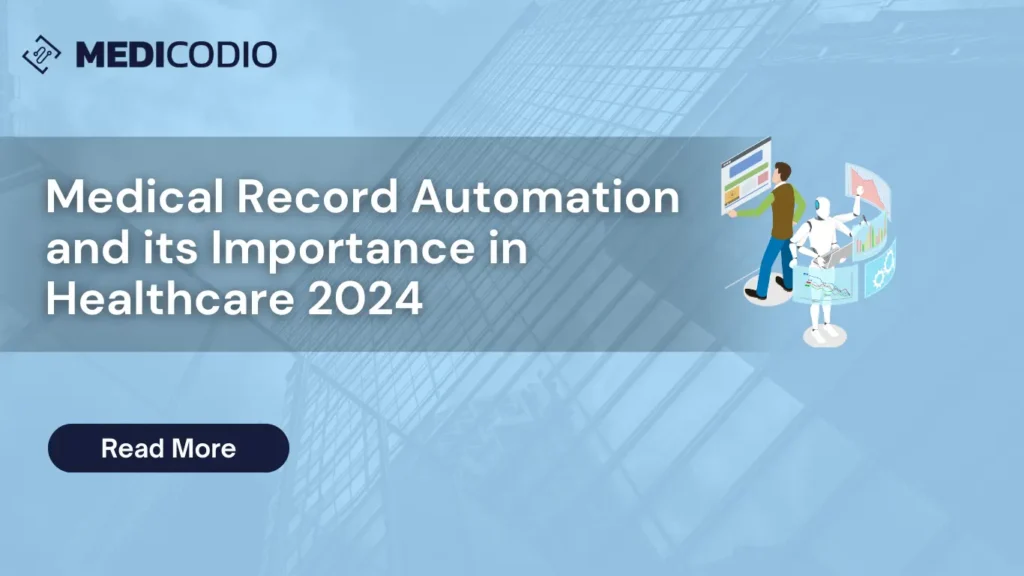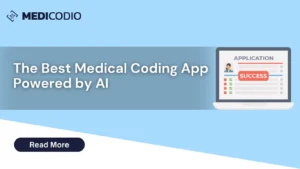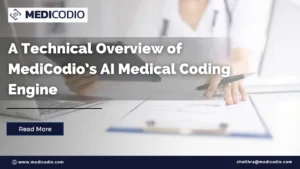The healthcare industry is vast and complex. One of the most daunting challenges faced by providers and RCM companies is the effective management of medical records. The sheer volume of patient data, coupled with evolving regulatory requirements and the demand for seamless interoperability, has created a pressing need for innovative solutions. This is where medical record automation emerges as a transformative force, offering a pathway to streamline processes, enhance accuracy, and improve overall efficiency in healthcare delivery.
Medical record automation encompasses a range of technologies and strategies aimed at digitizing, organizing, and analyzing patient information. From electronic health records (EHRs) to advanced data analytics and artificial intelligence (AI) applications, automation holds the promise of revolutionizing how medical records are handled, stored, and utilized.
The need for medical record automation is underscored by several key factors. Firstly, manual record-keeping processes are inherently prone to errors, leading to potential risks in patient care, billing inaccuracies, and compliance issues. Secondly, the exponential growth of healthcare data makes it increasingly challenging for traditional methods to keep pace, resulting in inefficiencies and delays in accessing critical information. Moreover, with the shift towards value-based care models and the emphasis on patient-centric approaches, healthcare providers must leverage technology to deliver timely, personalized care while maintaining data security and privacy standards.
In this article, we delve into the complexities of managing medical records, explore the transformative potential of automation technologies, and highlight the compelling reasons why healthcare organizations must embrace medical record automation as a strategic imperative. By understanding the challenges and opportunities in this domain, stakeholders can unlock new possibilities for improving healthcare outcomes, driving operational excellence, and ultimately, enhancing the patient experience.
What do you mean by Medical Record Automation?
Medical records or document automation is the process of using advanced technology to eliminate the manual work involved in the creation, management, distribution, and processing of medical documents. EHRs, Clinical notes, Prescription and Medication Records, Medical Billing and Coding Records, and more are some of the typical examples of medical records.
The objective of medical record automation is to improve the efficiency, accuracy, and accessibility of medical records while saving time and reducing the burden for healthcare professionals.
Need for Medical Record Automation
According to an Athenahealth report, over 90 percent of healthcare providers reported burnout in their daily routine. The major reason behind this is the excessive administrative paperwork, with 64% of physicians confirming they feel inundated by clerical requirements.
Best 5 Technology for Medical Record Automation
Numerous technology solutions are available to help healthcare organizations tackle the challenges posed by large volumes of digital data. Based on our research, the most commonly preferred solutions include:
Automated Charting Software: This technology automates the process of creating and updating medical charts, reducing manual entry errors and saving time for healthcare professionals. An example is software that automatically populates patient data from electronic health records (EHRs) into charts, ensuring accuracy and completeness.
Robotic Process Automation (RPA): The global robotic process automation in healthcare market size was evaluated at USD 1.4 billion in 2022 and is expected to hit around USD 14.18 billion by 2032 with a registered CAGR of 26.1% from 2023 to 2032. RPA uses software robots to automate repetitive tasks like data entry, appointment scheduling, and billing. For instance, RPA can automate the extraction of information from scanned documents into electronic systems, improving efficiency and reducing manual workloads.
Natural Language Processing (NLP): According to studies, 80% of the data generated in healthcare facilities are unstructured, and not utilized to its full capacity. Natural Language Processing (NLP) can guide healthcare professionals in making more informed decisions by analyzing data and extracting insights. NLP enables computers to understand and interpret human language. In healthcare, NLP can analyze clinical notes, extract relevant information, and assist in coding diagnoses and procedures accurately. An example is using NLP to identify key information in physician notes for coding purposes.
Machine Learning (ML): ML algorithms can learn from data patterns and make predictions or recommendations. In medical record automation, ML can help identify trends in patient data, predict potential health risks, and suggest personalized treatment plans. For example, ML algorithms can analyze patient data to predict readmission risks and enable proactive interventions.
Artificial Intelligence (AI): AI encompasses various technologies like ML, NLP, and more to simulate human intelligence. In medical record automation, AI can automate tasks, improve decision-making processes, and enhance patient care. For instance, AI-powered medical coding solutions can assist medical coders in assigning codes to a vast number of patient charts quickly and efficiently.
Implementation Doubts and its Solutions
While implementing medical record automation, users have several doubts. One of the primary concerns is the integration of automation technology with existing systems. Healthcare facilities often have complex IT infrastructures, and ensuring seamless integration without disrupting operations requires careful planning and coordination.
Another question that often revolves around is data security and privacy. Medical records contain sensitive information, and any automation system must adhere to strict regulations like HIPAA to protect patient data. Implementing robust cybersecurity measures and ensuring compliance with data protection laws are crucial steps in addressing this challenge.
Furthermore, resistance to change from healthcare professionals can be a hurdle. Some may be accustomed to traditional record-keeping methods and may be hesitant to adopt new technologies. Providing comprehensive training and support, demonstrating the benefits of automation, and involving stakeholders in the implementation process can help overcome this resistance.
On the solutions side, leveraging interoperability standards is key. Using standardized formats and protocols for data exchange enables different systems to communicate seamlessly, improving data accessibility and efficiency.
Additionally, implementing artificial intelligence (AI) and machine learning (ML) algorithms can enhance automation capabilities. These technologies can automate repetitive tasks, analyze data patterns for insights, and improve decision-making processes.
Moreover, investing in scalable and flexible automation solutions ensures adaptability to future changes and growth. Solutions that can easily integrate with new technologies and accommodate evolving healthcare needs contribute to long-term success.
In conclusion, while challenges exist in implementing medical record automation, strategic planning, technological advancements, stakeholder involvement, and adherence to regulations offer effective solutions to streamline healthcare processes and improve patient care.
Benefits of Medical Record Automation
Medical Record Automation offers a multitude of benefits, including significant advantages for medical coding processes. Here are some of the key benefits:
-
- Improved Efficiency: Automation streamlines the medical record retrieval, review, and coding processes, reducing manual effort and time spent on repetitive tasks. This efficiency gain allows coding professionals to focus more on complex cases and quality assurance.
-
- Enhanced Accuracy: Automated coding tools leverage advanced algorithms and machine learning to accurately assign medical codes based on clinical documentation. This reduces the risk of coding errors and improves coding accuracy, leading to fewer claim denials and compliance issues.
-
- Cost Savings: By automating medical record coding, healthcare organizations can lower labor costs associated with manual coding efforts. Additionally, improved accuracy can reduce revenue leakage due to undercoding or overcoding, optimizing reimbursement and financial performance.
-
- Faster Reimbursements: Efficient coding through automation accelerates the revenue cycle by speeding up claim submissions and reducing coding backlogs. This results in faster reimbursements and improved cash flow for healthcare providers.
-
- Compliance and Audit Readiness: Automated coding systems can help ensure coding compliance with regulatory guidelines and payer requirements. These systems often include built-in audit trails and reporting capabilities, making it easier to demonstrate coding accuracy and adherence to coding standards during audits.
-
- Scalability and Flexibility: Automation can scale to handle large volumes of medical records, making it suitable for healthcare organizations of all sizes. It also offers flexibility to adapt to evolving coding requirements and changes in healthcare regulations.
-
- Integration with AI-driven Insights: Medical record automation often integrates with AI-driven analytics and insights, providing valuable data on coding patterns, reimbursement trends, and documentation gaps. This data can inform process improvements and revenue optimization strategies.
Medical Record Automation, including its impact on medical coding processes, brings efficiency, accuracy, cost savings, compliance, scalability, and actionable insights to healthcare organizations, driving improved financial performance and patient care outcomes.
Best Practices for Successful Automation Integration in Healthcare
Automation integration in healthcare has become essential for improving efficiency, reducing errors, and enhancing patient care. However, successful implementation requires careful planning, consideration of best practices, and overcoming challenges. Here are some key strategies for ensuring successful automation integration in healthcare settings.
Firstly, it’s crucial to conduct a thorough assessment of current processes and identify areas where automation can bring the most significant benefits. This includes evaluating tasks that are repetitive, time-consuming, error-prone, or resource-intensive. Prioritizing automation implementation based on these criteria ensures that resources are allocated efficiently and that automation targets critical areas for improvement.
Secondly, choosing the right technologies is vital for successful automation integration. Healthcare organizations should invest in robust automation platforms that can handle complex tasks, integrate seamlessly with existing systems, and provide scalability for future needs. Technologies such as Robotic Process Automation (RPA), Artificial Intelligence (AI), Natural Language Processing (NLP), and Machine Learning (ML) are commonly used for automation in healthcare due to their ability to automate tasks, analyze data, and improve decision-making processes.
Moreover, collaboration between IT teams, healthcare professionals, and automation experts is key to successful integration. IT teams play a crucial role in ensuring that automation platforms are secure, compliant with regulations such as HIPAA, and compatible with existing IT infrastructure. Healthcare professionals provide valuable insights into workflow requirements, patient needs, and clinical considerations, guiding the development and implementation of automation solutions. Collaboration fosters a holistic approach to automation integration, aligning technology with clinical and operational objectives.
Furthermore, training and upskilling staff are essential for successful automation adoption. Healthcare professionals need to be familiar with automation tools, understand their benefits, and know how to leverage them effectively in their workflows. Training programs should be tailored to different roles and responsibilities, providing hands-on experience and continuous learning opportunities. This ensures that staff are confident and competent in using automation tools to improve productivity and quality of care.
Additionally, monitoring and evaluating automation performance are critical for ongoing success. Healthcare organizations should establish key performance indicators (KPIs) related to automation, such as process efficiency, error rates, cost savings, and patient outcomes. Regularly measuring KPIs allows organizations to identify areas for improvement, optimize automation workflows, and demonstrate the impact of automation on healthcare delivery.
Lastly, continuous improvement and innovation are essential for staying ahead in automation integration. Healthcare is a dynamic industry with evolving challenges and opportunities. Organizations should actively seek feedback from stakeholders, monitor industry trends, and explore emerging technologies to enhance automation capabilities and address new challenges effectively.
In conclusion, successful automation integration in healthcare requires a strategic approach, collaboration, training, monitoring, and continuous improvement. By following best practices and leveraging the right technologies, healthcare organizations can unlock the full potential of automation to improve patient care, streamline processes, and achieve operational excellence.
Future of Medical Record Automation
The future of medical record automation is characterized by advanced technologies such as AI, ML, NLP, and RPA, offering unprecedented opportunities to enhance healthcare quality, efficiency, and patient outcomes. Embracing these innovations will drive the evolution of healthcare delivery towards a more data-driven, interconnected, and patient-centric ecosystem.
Many healthcare organizations are on the verge of implementing automation not just for managing medical records, but for the entire RCM process and beyond.
One of the primary avenues through which AI and automation enhance efficiency and productivity is through streamlined workflows. For instance, AI-powered systems can automate routine tasks such as appointment scheduling, billing, and claims processing, reducing manual errors and freeing up staff to focus on more complex and value-added activities. This not only accelerates processes but also minimizes delays and improves overall operational efficiency.
Furthermore, AI-driven analytics play a pivotal role in enhancing productivity by providing actionable insights from vast volumes of data. Healthcare providers can leverage AI algorithms to analyze patient outcomes, identify trends, and personalize treatment plans, leading to improved clinical outcomes and patient satisfaction. Similarly, RCM companies can harness AI analytics to optimize revenue streams, identify billing anomalies, and forecast financial performance, enabling proactive decision-making and resource allocation.
Moreover, AI-powered solutions such as Natural Language Processing (NLP) and Machine Learning (ML) algorithms enable intelligent automation in medical coding. These technologies can automatically extract relevant information from medical records, assign appropriate codes, and flag potential discrepancies, significantly reducing coding errors and speeding up the reimbursement process. This not only improves revenue cycle efficiency but also ensures accurate billing and compliance with regulatory requirements.
To illustrate, consider a scenario where a large healthcare system integrates AI-driven revenue cycle automation. By leveraging predictive analytics, the system identifies patterns in claim denials, enabling proactive interventions to resolve underlying issues. Simultaneously, AI-driven coding software accurately assigns codes based on clinical documentation, reducing claim rejections and accelerating revenue realization. As a result, the organization experiences a substantial increase in revenue capture and operational efficiency, driving overall productivity gains.
In conclusion, the strategic adoption of AI and automation holds immense potential for healthcare providers and RCM companies to enhance efficiency and productivity. By automating routine tasks, leveraging data-driven insights, and optimizing revenue cycle processes, organizations can achieve cost savings, improve patient outcomes, and achieve sustainable growth in today’s dynamic healthcare landscape.
About MediCodio
The impact of AI on healthcare is fascinating and there is still much to be discovered. However, one area that is gaining momentum is the use of AI in medical coding. Independent coders, coding departments, and RCM companies are all seeking ways to optimize their profits and efficiency.
Automated coding tools, such as MediCodio, are a comprehensive solution for this. MediCodio is an AI-powered coding tool that can reduce medical coding costs and improve efficiency by up to 45%. It is an excellent fit for both RCM companies and hospital billing departments. CODIO suggests medical codes (CPT, ICD10, HCPCS, modifiers) by analyzing patient demographic information from EHR systems, as well as Physician Notes/Chart. After the medical coder selects a code from the list of suggested codes, CODIO sends the codes to the billing system.





